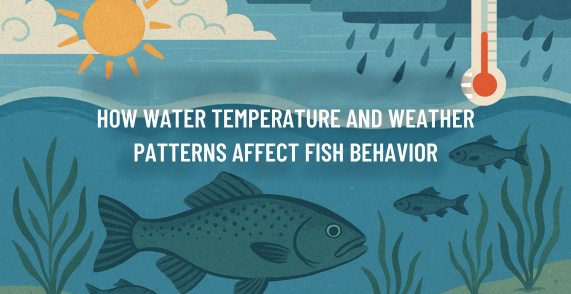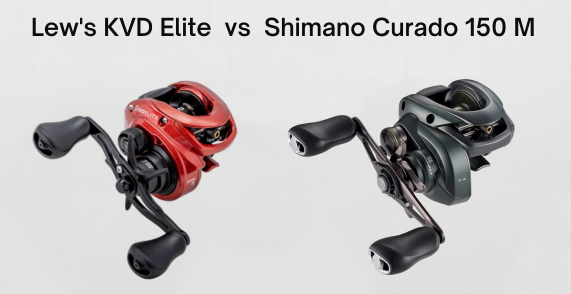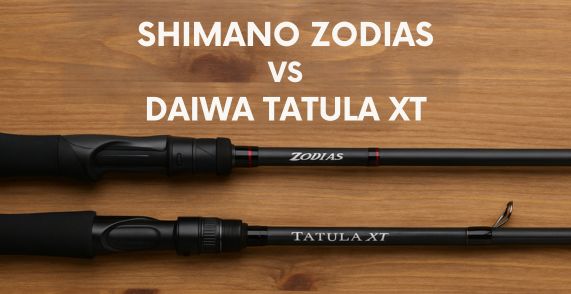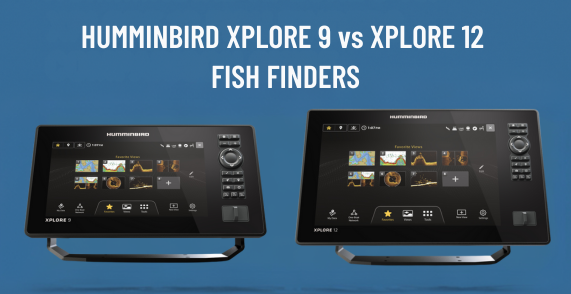In This Post
- 1 Key Takeaways
- 2 Fish Are Temperature-Dependent Machines That Control Your Success
- 3 How Water Temperature Controls Fish Activity Levels
- 4 The Critical Oxygen-Temperature Connection
- 5 Barometric Pressure Changes Often Correlate with Feeding Activity
- 6 Cold Fronts Create Dramatic Behavioral Shifts
- 7 Rain and Warm Fronts Change Fish Location Patterns
- 8 Master These Environmental Cues to Consistently Catch More Fish
Key Takeaways
- Water temperature directly controls fish metabolism: Warmer water accelerates fish feeding and activity up to a species-specific threshold, while cold water makes fish lethargic and less likely to bite.
- Barometric pressure changes often correlate with feeding patterns: Falling pressure before storms frequently creates feeding activity, while rising pressure after weather systems typically slows fish activity for days.
- Each fish species has an optimal temperature range: Cold-water species like trout generally thrive in 50-65°F, while warm-water species like bass prefer temperatures around 65-84°F.
- The oxygen-temperature connection creates critical fishing zones: Cold water holds more oxygen, and the thermocline layer can provide productive fishing areas where temperature and oxygen levels balance favorably.
- Strategic timing around weather patterns can improve catch rates: Pre-front conditions often offer excellent fishing opportunities, though stable weather periods also provide consistent results.
Understanding how environmental factors influence fish behavior transforms average anglers into consistently successful ones.
Water temperature and weather patterns aren’t just background conditions—they’re primary drivers of when, where, and how aggressively fish feed.
Fish Are Temperature-Dependent Machines That Control Your Success
Fish operate as biological machines entirely dependent on their surrounding environment. Unlike warm-blooded animals that regulate their own body temperature, fish are ectothermic creatures whose internal temperature matches the water around them.
This fundamental characteristic makes water temperature the master control switch for virtually every aspect of fish behavior, from their energy levels to their willingness to chase lures.
The relationship between temperature and fish activity isn’t simply linear—it’s a complex dance of metabolic processes, oxygen availability, and species-specific preferences. When anglers understand these connections, they gain a significant advantage in predicting fish behavior and adjusting their strategies accordingly.
Every degree of temperature change triggers cascading effects throughout a fish’s physiology. Their digestive enzymes work faster or slower, their oxygen demands increase or decrease, and their overall activity levels shift dramatically.
This biological reality means that successful fishing requires reading the water’s temperature story, not just casting blindly and hoping for luck.
How Water Temperature Controls Fish Activity Levels
1. Warmer Water Accelerates Fish Metabolism and Feeding
Warmer water temperatures act like a biological accelerator for fish, dramatically increasing their metabolic rates and creating more aggressive feeding behavior.
Studies indicate that fish metabolism can approximately double for every 10°C rise in temperature, though this relationship varies by species and plateaus at higher temperatures. This metabolic boost means fish process food faster, requiring them to eat more frequently to maintain their energy levels.
In water temperatures within their optimal range, fish become active hunters rather than passive opportunists. Their digestive enzymes work efficiently, allowing them to quickly process meals and return to hunting mode.
Many fishing guides report excellent action when water temperatures reach productive ranges, where fish feed aggressively throughout the day.
2. Cold Water Creates Lethargic, Less Active Fish
Cold water has the opposite effect, essentially putting fish into a semi-dormant state where every biological process slows down.
Cold-blooded species become noticeably lethargic as temperatures drop below their preferred ranges, feeding less frequently and moving much less overall. Their digestive enzymes work at a crawl, meaning a single meal can take much longer to process.
This biological slowdown forces successful cold-water anglers to completely change their approach. Instead of fast-moving presentations that work in warm water, cold conditions demand slow, deliberate techniques that give sluggish fish time to react.
Many experienced anglers report that winter fishing requires presentations that are significantly slower than summer techniques.
3. Each Species Has Its Own Optimal Temperature Range
Different fish species have evolved distinct thermal preferences that directly impact where and when anglers should target them. Cold-water species like trout generally thrive in temperatures around 50-65°F, though they can be found in waters between 34-67°F depending on conditions.
Warm-water species like bass prefer temperatures ranging from 65-84°F, with optimal feeding often occurring in the upper portion of this range. These preferences represent the temperatures where each species’ biological systems work most efficiently.
Understanding these species-specific ranges allows anglers to predict fish locations throughout the seasons. When surface temperatures climb above a species’ preferred range, fish often retreat to deeper, cooler water or seek shade near structures.
Conversely, when temperatures drop below their comfort zone, fish may move to shallow areas that warm faster during sunny days.
The Critical Oxygen-Temperature Connection
Why Cold Water Holds More Dissolved Oxygen Plus Other Key Factors
The physics of water create a critical relationship between temperature and oxygen availability that directly affects fish behavior.
Cold water naturally holds significantly more dissolved oxygen than warm water—a phenomenon that occurs because oxygen molecules move more slowly in cooler temperatures and are less likely to escape into the atmosphere.
This relationship creates one of fishing’s fundamental challenges: as fish need more oxygen due to increased metabolism in warm water, less oxygen becomes available.
Different species have varying oxygen requirements that influence their behavior patterns. Cold-water fish like trout typically require higher dissolved oxygen levels for optimal activity, while warm-water species like bass can tolerate lower oxygen concentrations.
These requirements explain why certain species disappear from shallow, warm areas during summer months and concentrate in deeper, cooler zones with better oxygenation.
How Hot Water Creates Fish Stress and Forces Depth Changes
When water temperatures exceed a species’ optimal range, the combination of elevated metabolic demands and reduced oxygen availability creates significant stress.
Fish in these conditions often exhibit telltale distress signals, including gulping air at the surface or concentrating in the shallow edges where slight water movement might provide marginally better oxygen levels.
During extreme heat events, larger fish with higher oxygen requirements often suffer first, leading to observable mortality in severe cases.
This thermal stress forces fish to make strategic location changes that smart anglers can exploit. During hot summer conditions, successful fishermen focus on deeper water, areas with current flow, or spots where cooler water enters the system through springs or tributaries.
The thermocline layer—where temperature drops rapidly with depth—can become a productive fishing zone because it may provide a favorable balance of manageable temperature and adequate oxygen levels, though oxygen depletion below this layer should be considered.
Barometric Pressure Changes Often Correlate with Feeding Activity
1. Falling Pressure Before Storms Often Activates Feeding Despite Scientific Debate
Falling barometric pressure, typically occurring 24-48 hours before major weather systems arrive, often triggers increased feeding behavior that many anglers experience throughout the year.
While the exact mechanism remains debated among scientists—with some suggesting that associated weather changes rather than pressure itself are the primary drivers—the behavioral correlation is frequently observed.
Fish seem to sense approaching weather changes and respond with heightened feeding activity, possibly due to their gas-filled swim bladders being sensitive to these pressure fluctuations.
Many experienced guides specifically target these pre-frontal conditions because fish often abandon their normal caution and feed more actively in shallow water areas they typically avoid.
The pressure drop appears to signal fish that stable feeding conditions may disappear soon, triggering a response to capitalize on current opportunities. This creates productive fishing windows that can significantly impact trip success.
2. Rising Pressure After Weather Systems Often Slows Fish Down for Days
Rising barometric pressure following weather fronts typically creates the opposite effect, often reducing fish activity for 2-3 days as high-pressure systems settle in. Fish become notably more wary and less aggressive during these periods, requiring significantly more finesse from anglers.
The stable, clear conditions that often accompany high pressure make fish feel exposed and vulnerable, causing them to retreat to deeper water or heavy cover.
Successful post-frontal fishing demands completely different tactics. Anglers must slow their presentations, downsize their lures, and target areas where fish feel secure rather than focusing on traditional feeding zones.
The feeding activity that does occur tends to be brief and subtle, requiring careful attention to detect light bites that fish might quickly release.
3. Stable Pressure Periods Offer Consistent Fishing
Extended periods of stable barometric pressure, whether high or low, eventually produce more predictable fishing patterns as fish adjust to consistent conditions. After the initial disruption of pressure changes passes, fish settle into regular feeding routines that anglers can learn and exploit.
These stable periods often provide reliable fishing, even if the peak action doesn’t match pre-frontal feeding activity.
During stable conditions, fish location becomes more predictable based on factors like time of day, water temperature, and seasonal patterns rather than barometric fluctuations.
This consistency allows anglers to develop repeatable strategies and build confidence in specific techniques and locations.
Cold Fronts Create Dramatic Behavioral Shifts
Pre-Front Feeding Opportunities You Can’t Miss Due to Pressure Drops
The 12-24 hour period before cold fronts arrive often represents highly productive fishing opportunities. Studies tracking fish behavior show that many species dramatically increase their feeding activity as pressure drops and atmospheric conditions destabilize.
Fish seem to instinctively understand that comfortable feeding conditions are about to disappear, triggering urgent feeding behavior that overrides their normal caution.
During these pre-front windows, fish often abandon deep water sanctuaries and move into shallow areas they normally avoid. They become less selective about lure choices and more aggressive in their strikes.
Many professional anglers plan their most important fishing trips around these weather patterns because the action can be dramatically better than normal conditions.
Post-Front Recovery Requires Slow, Deliberate Presentations in Deeper Water
After cold fronts pass and water temperatures drop, fish behavior shifts dramatically toward self-preservation rather than aggressive feeding. The combination of temperature shock and rising barometric pressure creates lethargic fish that concentrate in deeper, more stable water areas.
Their metabolism slows significantly, reducing their need to feed frequently and making them much more selective about expending energy to chase lures.
Successful post-front fishing requires completely relearning the water. Fish that were in 5-10 feet of water before the front might retreat to 20-30 feet afterward.
Lure presentations must slow considerably to match the fish’s reduced activity level. Patience becomes the angler’s most important tool during these recovery periods.
Rain and Warm Fronts Change Fish Location Patterns
How Light Rain Often Improves Fishing Conditions
Light to moderate rainfall creates several beneficial changes that frequently improve fishing success. Rain increases water oxygenation through surface agitation, washing insects and organic matter into the water to create new food sources.
The surface disturbance also provides cover that makes fish feel more secure about moving into shallow feeding areas they might normally avoid during bright, calm conditions.
Additionally, rain reduces the amount of light penetrating the water, which decreases fish wariness and allows them to hunt more aggressively in areas where they’d typically remain hidden.
The slight color increase in the water also helps mask lure imperfections and fishing line visibility, though heavy rain can create challenging muddy conditions.
Why Warm Fronts Push Fish to Deeper Water or Shallow Warmth Zones
Warm fronts create complex behavioral patterns that vary significantly by season and existing water temperatures.
During cooler months, warm fronts might attract fish to shallow areas that receive maximum solar heating, creating concentrated feeding opportunities in specific zones. However, during already-warm periods, warm fronts often push fish deeper to escape rising surface temperatures that exceed their comfort range.
The key to fishing warm fronts successfully lies in understanding each species’ thermal preferences and current water conditions.
When surface temperatures approach or exceed optimal ranges, fish seek thermal refuge in deeper water, around springs, or in shaded areas.
Anglers must use slower presentations during warm fronts because fish often become more cautious and selective about expending energy in challenging thermal conditions.
Master These Environmental Cues to Consistently Catch More Fish
Successful fishing demands reading environmental conditions like a biological detective, connecting temperature, pressure, and weather patterns to predict fish behavior with remarkable accuracy.
The most consistent anglers don’t just react to current conditions—they anticipate how fish will respond to approaching changes and position themselves accordingly.
This requires monitoring weather forecasts, understanding seasonal temperature patterns, and recognizing the specific behavioral signatures each fish species exhibits under different environmental pressures.
Timing becomes everything when environmental factors align properly. Pre-frontal conditions might last only 6-12 hours, but they can produce more fish than weeks of stable weather.
Similarly, finding the thermocline layer during summer stratification can concentrate fish in a narrow band that eliminates 80% of unproductive water from consideration.
These patterns repeat predictably across different water bodies and seasons, making environmental awareness a transferable skill that improves fishing success anywhere.
The integration of temperature monitoring, barometric pressure awareness, and weather pattern recognition transforms fishing from random casting into strategic hunting. Technology makes this easier than ever, with tools providing real-time pressure readings and detailed temperature data.
However, the most important element remains understanding how fish respond biologically to these changes, allowing anglers to predict behavior rather than simply react to it.







